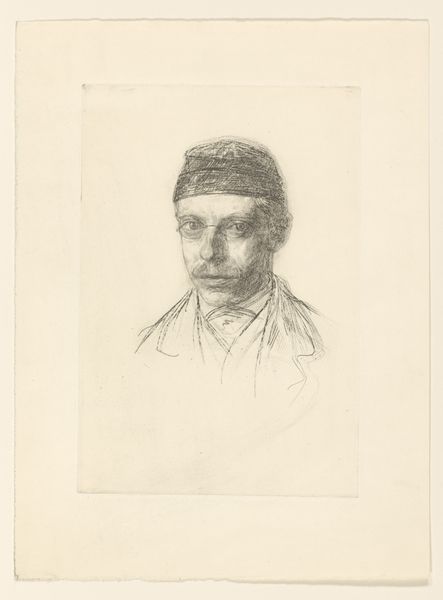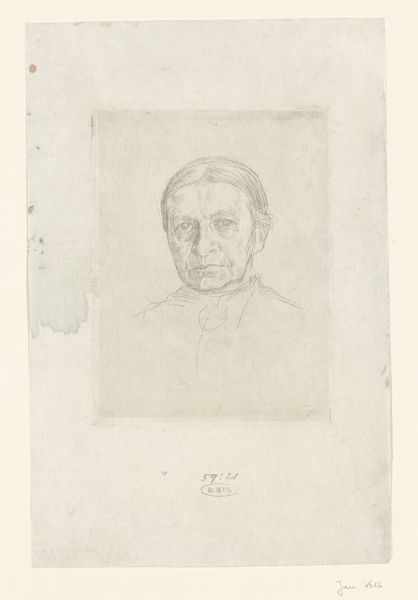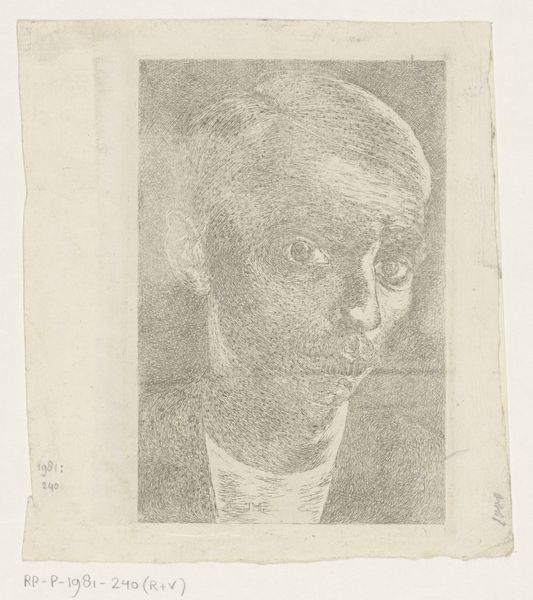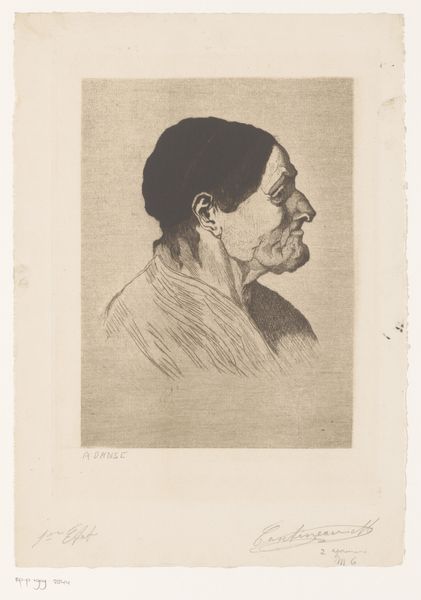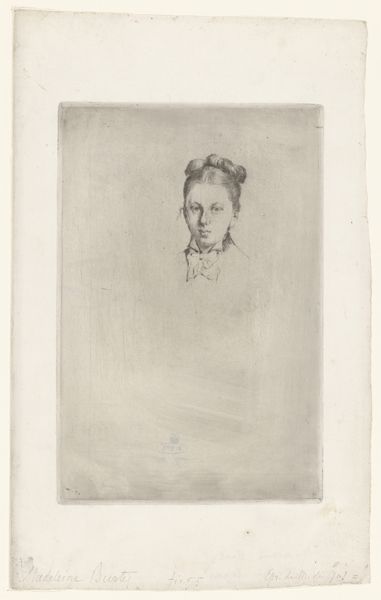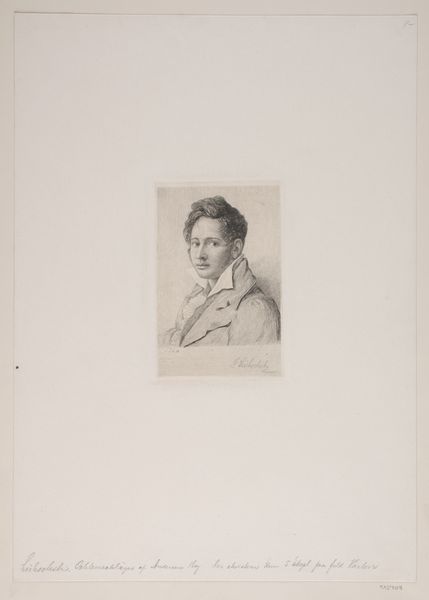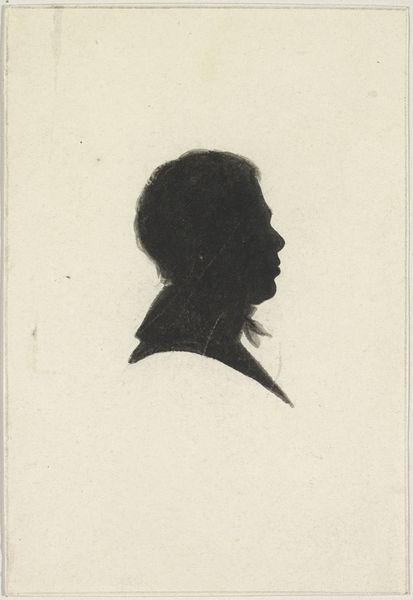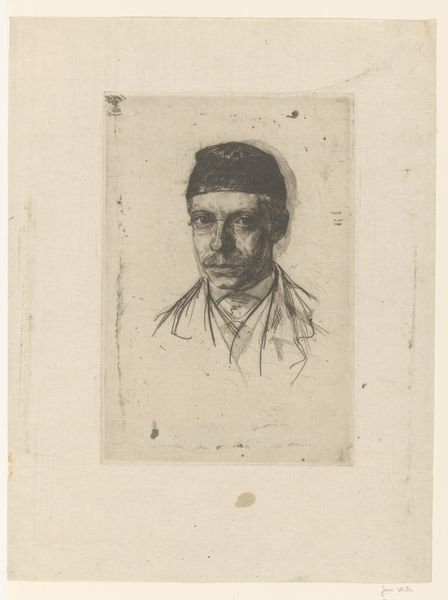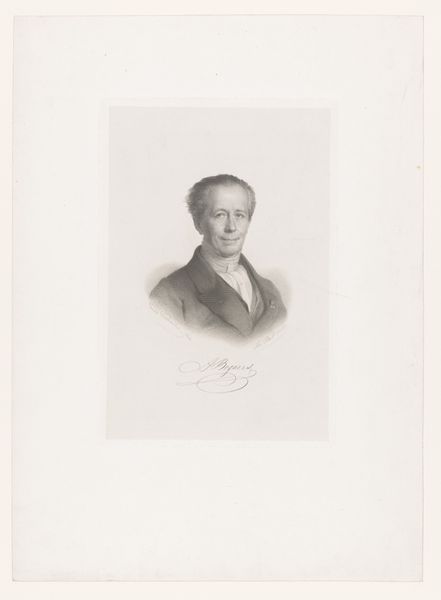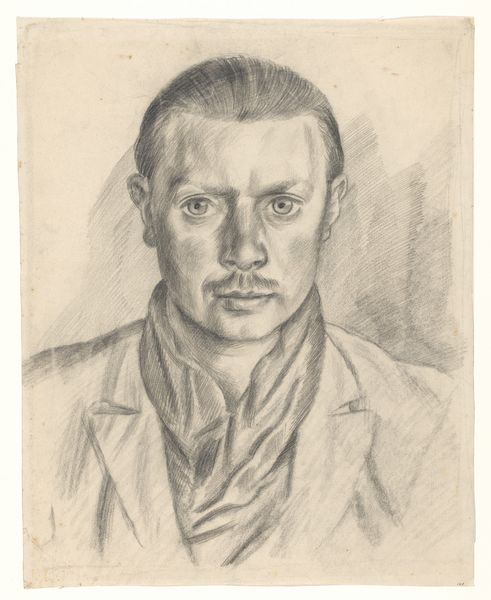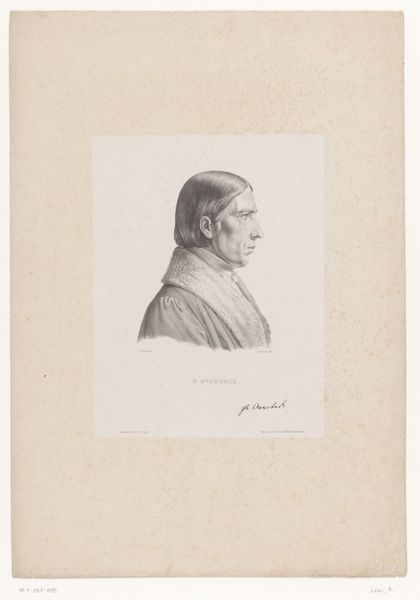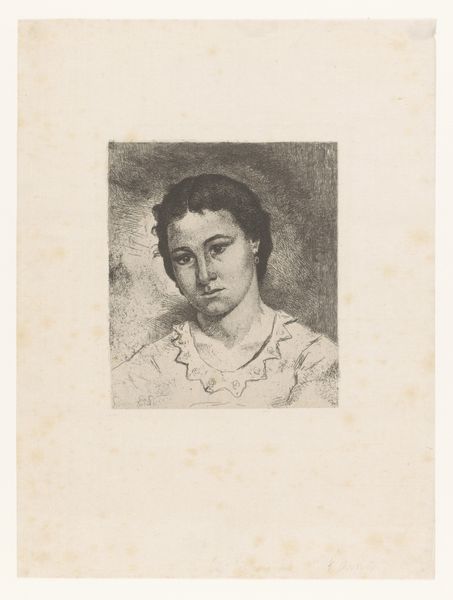
drawing, paper, pencil
#
portrait
#
drawing
#
paper
#
pencil
#
realism
Dimensions: height 185 mm, width 134 mm
Copyright: Rijks Museum: Open Domain
Curator: Welcome. Here we have a delicate pencil drawing on paper entitled "Self-Portrait at Sixteen," created by Auguste Danse, an artist active between 1839 and 1909. Editor: My initial reaction is one of quietude. The muted tones and meticulous lines lend it a sense of contemplative introspection. There's a palpable sense of youthful seriousness emanating from the subject's gaze. Curator: Indeed. Note how Danse employs hatching and cross-hatching to build volume and subtly define the planes of the face. The slightly off-center composition contributes to an informal feel. Editor: Yes, but consider too the conventions of self-portraiture and class. The necktie and the faint suggestion of formal wear are markers of a certain societal positioning that often coincided with artistic practice during that era. What were the conditions that afforded a sixteen-year-old the leisure to create a self-portrait? Curator: Formally speaking, the portrait adheres to certain realist principles through close observation. Danse carefully models the brow, cheekbones, and mouth, rendering a likeness that is credible yet subtly idealized. Semiotically, we might read this youthful countenance as a symbol for burgeoning creativity and the dawn of artistic ambition. Editor: But let’s also consider how racial identities intersect here. To what extent did Auguste Danse grapple with representations of race in portraiture and what opportunities were presented to those working outside normative social spheres? Curator: Those are salient points that are, perhaps, beyond the immediate scope of formal analysis but are no less crucial in understanding the totality of this work's significance. The soft lighting emphasizes the roundness of youth, but in so doing is rendered quite traditional, as opposed to being evocative or probing. Editor: In that softness there is a story. How were people encouraged to view race and artistic representation? It remains crucial that we pose critical questions when considering the history of portraiture. Curator: A beautiful meditation on portraiture, a reminder of the complexities art holds and elicits.
Comments
No comments
Be the first to comment and join the conversation on the ultimate creative platform.

